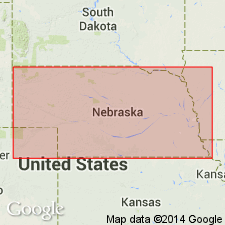
- Usage in publication:
-
- Nemaha formation
- Modifications:
-
- Original reference
- Dominant lithology:
-
- Limestone
- Shale
- AAPG geologic province:
-
- Nemaha anticline
- Forest City basin
Summary:
Pg. 8, 14, 26. Nemaha formation. A formation of limestones and shales, 110 to 130 feet thick, underlying McKissick Grove shales and overlying City Bluffs (Scranton) shales. Includes (descending) Tarkio limestone, Preston limestone, Fargo limestone, Burlingame limestone, and Rulo limestone members and the separating shales. Age is Pennsylvanian.
Best developed in Big Nemaha Valley, with exposures between Tecumseh and Humboldt and between Union and Nebraska City, north of Rulo, and at mouth of the Big Nemaha, [Cass, Johnson, Nemaha, Otoe, Pawnee, and Richardson Cos.], southeastern NE.
Source: US geologic names lexicon (USGS Bull. 896, p. 1475); GNC KS-NE Pennsylvanian Corr. Chart, sheet 1, Oct. 1936.
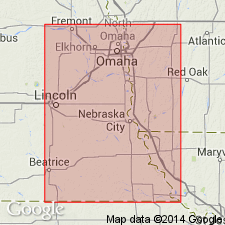
- Usage in publication:
-
- Nemaha member or Nemaha formation
- Modifications:
-
- Revised
Summary:
Pg. 62, 71. The so-called Nemaha member or formation is reduced by excluding at base the Rulo limestone and overlying Silver Lake shale, which some geologists would assign to Scranton shale. The "Preston" limestone is the Emporia; the "Fargo" limestone is the Wakarusa, both of which have priority. Nemaha formation is dropped provisionally, to be revived if it is decided by State and Federal Geol. Surveys that Wabaunsee beds represent 2 formations, and boundary of lower one is placed at Rulo limestone or at Silver Lake coal.
Source: US geologic names lexicon (USGS Bull. 896, p. 1475).
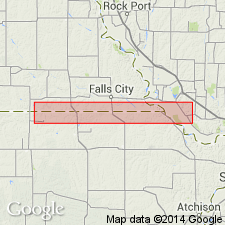
- Usage in publication:
-
- Nemaha subgroup [informal]
- Modifications:
-
- Revised
- AAPG geologic province:
-
- Forest City basin
- Nemaha anticline
Summary:
Pg. 4, 10. Nemaha subgroup [informal]. Adopted [by the Nebraska Geol. Survey] to included Tarkio limestone formation at top, down to base of Burlingame limestone formation. Age is Pennsyvlanian.
See also "Kansas-Nebraska Pennsyvlanian correlation chart," sheet 2, compiled by M.G. Wilmarth, Secretary of Committee on Geologic Names, USGS, Oct. 1936.
["Subgroup" not recognized as a formal stratigraphic rank term (CSN, 1933; ACSN, 1961, 1970; NACSN, 1983, 2005, 2021). Considered informal and should not be capitalized.]
Source: US geologic names lexicon (USGS Bull. 896, p. 1475).
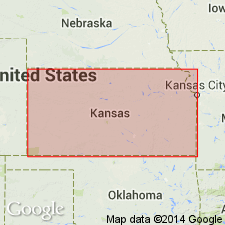
- Usage in publication:
-
- Nemaha limestone
- Modifications:
-
- Not used
Summary:
Pg. 215. †Nemaha limestone. In Nebraska Geol. Survey Bull. 5, 1932, table C, p. 18, by G.E. Condra, R.C. Moore, and C.O. Dunbar, strata from base of Burlingame limestone to top of Tarkio are called "Nemaha limestone." Moore was not consulted on this usage and has never adopted it. [Nemaha is discarded by Kansas Geol. Survey, being preceded by dagger in this bulletin.]
[See "Modern classifications of the Pennsylvanian rocks of eastern Kansas and southeastern Nebraska," compiled by M.G. Wilmarth, Secretary of Committee on Geologic Names, USGS unpub. corr. chart, Oct. 1936, sheet 2.]
Source: US geologic names lexicon (USGS Bull. 896, p. 1475); GNC KS-NE Pennsylvanian Corr. Chart, sheet 2, Oct. 1936.
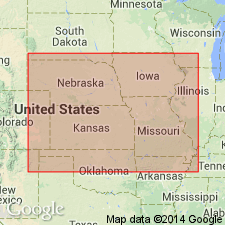
- Usage in publication:
-
- Nemaha subgroup [informal]
- Modifications:
-
- Overview
Summary:
Pg. 2036, 2036, (fig. 6). Subgroups named (ascending) Sacfox, Nemaha, and Richardson by Condra (1935) have been included in interstate classification agreed upon by the State Geological Surveys of Iowa, Kansas, Missouri, Nebraska, and Oklahoma [not adopted by the USGS]. As thus defined, Nemaha subgroup in standard section includes (ascending) Burlingame limestone, Soldier Creek shale, Wakarusa limestone, Auburn shale, and Tarkio limestone. Nomenclature in the several states may deviate from this by combination or omission of terms where certain named rock units are not recognizable. See also: R.C. Moore, 1949, Kansas Geol. Survey Bull. 83, p. 177-179; G.E. Condra, 1949, Nebraska Geol. Survey Bull. 16, p. 15-16; F.C. Greene and W.V. Searight, 1949, Missouri Geol. Survey and Water Resources Rept. Inv. 11, p. 20.
["Subgroup" not recognized as a formal stratigraphic rank term (CSN, 1933; ACSN, 1961, 1970; NACSN, 1983, 2005, 2021). Considered informal and should not be capitalized.]
Source: US geologic names lexicon (USGS Bull. 1200, p. 2704).
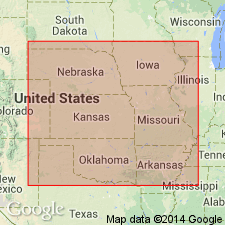
- Usage in publication:
-
- Nemaha subgroup [informal]
- Modifications:
-
- Revised
Summary:
Pg. 2274 (fig. 1), 2277. Nemaha subgroup [informal]. Nemaha-Richardson boundary lowered to base of Tarkio limestone herein reduced to member status in Zeandale formation (new). This change has been agreed to by the Nebraska and Kansas Geological Surveys which are chiefly concerned. As herein redefined, Nemaha subgroup comprises four formations (ascending): Bern limestone (with Burlingame limestone member at base), Auburn shale, Emporia limestone, and Willard shale. Age is Late Pennsylvanian (Virgilian).
["Subgroup" not recognized as a formal stratigraphic rank term (CSN, 1933; ACSN, 1961, 1970; NACSN, 1983, 2005, 2021). Considered informal and should not be capitalized.]
Source: US geologic names lexicon (USGS Bull. 1200, p. 2704).
For more information, please contact Nancy Stamm, Geologic Names Committee Secretary.
Asterisk (*) indicates published by U.S. Geological Survey authors.
"No current usage" (†) implies that a name has been abandoned or has fallen into disuse. Former usage and, if known, replacement name given in parentheses ( ).
Slash (/) indicates name conflicts with nomenclatural guidelines (CSN, 1933; ACSN, 1961, 1970; NACSN, 1983, 2005, 2021). May be explained within brackets ([ ]).

